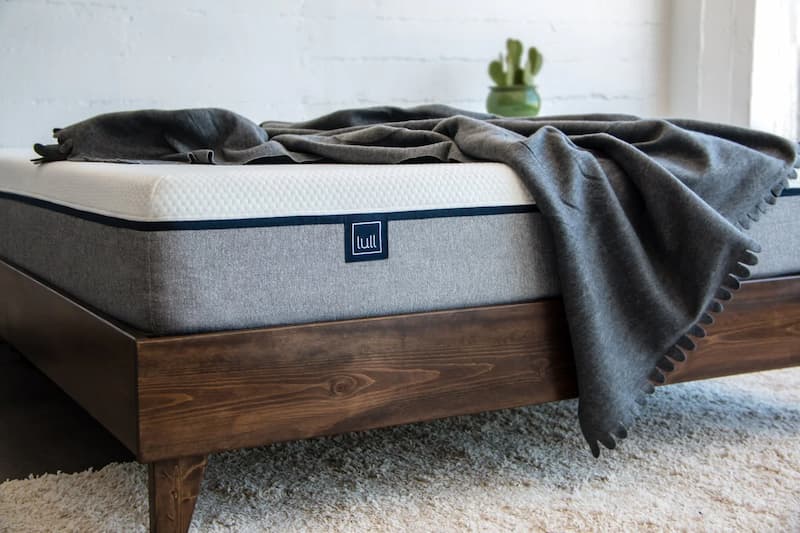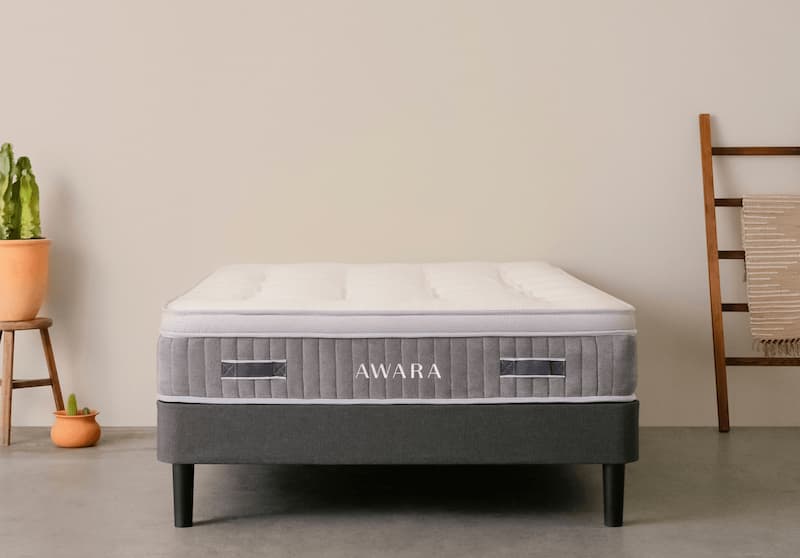How to Store a Mattress In 6 Easy Steps

You may need to keep a mattress at some time, whether you’re trying to downsize your house, turn a room into a gym, or have a teenager leaving for college. Mattresses are expensive, therefore it’s critical to take the appropriate precautions to ensure the longevity of your mattress while in storage. If you’re wondering how to properly store a mattress, you’ve come to the perfect spot.
It may appear like leaning your mattress upright in your attic or storing your bed beneath other furniture in your garage is a fine option, but this might result in a dented region or germs spreading on your mattress. Instead, follow these instructions to keep your mattress in good condition while in storage.
Table of Contents
How to Store a Mattress?
Step 1: Determine the optimum location for storage.
The location of your mattress is critical. This is due to the fact that mattresses are large things that must be stored in a location where they will not be disturbed.
Keeping a mattress at home
If you’re storing your mattress at home, your garage will most likely provide the ideal conditions for it. This is because it is out of the way and cooler than the rest of the home, lowering the danger of filling and cover damage.
However, before storing your mattress, make sure that the location is clean and dry.
Keeping a mattress in a rented space
To keep your mattress smelling fresh and the comfort fillings in good condition, make sure the storage location is sufficiently aired or climate controlled. The room should be clean and sanitary, with enough space for you to put your mattress flat on the floor.
The cost of a mattress storage unit is typically determined by the size of the unit and the length of time you want to keep it there. Prices, however, might vary based on where you reside and the demand for storage.
Step 2: Clean and air out the mattress thoroughly.
There are several methods for cleaning a mattress, but the simplest is to vacuum both sides of the mattress and then apply upholstery cleaner (like the kind you use on a couch). To prepare a mattress for storage, do the following:
Strip all linen and remove the mattress and boxspring from the bed frame.
Allow baking soda to stay on the outside to absorb leftover scents.
Using an attachment, vacuum up all of the baking soda.
Allow the mattress to air out for a few hours before moving on.
Step 3: Cover the mattress in plastic wrap.
Before transferring a mattress to its storage location, wrap it in plastic and tie it with packing tape to form a tight seal. If at all possible, avoid using thick plastic coverings, which are more prone to collect moisture. A lightweight, breathable plastic is preferable.
Similarly, the mattress should be covered for the most of the time it is in storage. Consider obtaining a high-quality mattress bag (with no holes or tears) for long-term storage, which should cost less than $20. These coverings are intended to keep mold at bay and the mattress dry.
Bonus Tip: When keeping a mattress for an extended period of time, unwrap the plastic covering every few months to allow the mattress to air out. Make careful to completely reseal afterward.
Step 4: Use a covered moving truck to transport your belongings.
Cover the bed parts with old blankets or sheets when transporting your mattress from point A to point B to protect them from dirt and harm. Always use a moving truck that is covered.
Tying a mattress to the top of your car is not only dangerous, but it may also cause the mattress to bend beyond repair. Inclement weather might also make relocating a mattress on an open truck bed more difficult.
It’s fine to keep the mattress on its side during the moving procedure to make extra room in the moving truck. This strategy is preferable than stacking heavy furniture on top of the mattress.
Also see: How to Move Heavy Items With Ease (5 Tips)
Step 5: When storing the mattress, lay it flat.
While some sites recommend propping the mattress on its side to reduce room, you should never keep a mattress upright for a lengthy amount of time. It’s fine to transport your mattress upright, but once inside your storage container, lay it flat to resemble its natural configuration.
Mattresses must be stored flat because the coils and inner workings of a side-stored mattress may ultimately settle out of place, ruining the cushion.
Step 6: Keep all items off the mattress.
Never put anything on top of your mattress. The springs might be damaged by heavy things. Heavy things also cause additional wear on the outside.
Place the mattress on top of other things, such as pallets or other flat-topped furniture, to maximize space. But make sure everything is stable!
Can I keep my mattress for an extended period of time?
Yes, if you follow the methods outlined above and keep an eye on it. This keeps your mattress in great condition throughout storage.
If you know you’ll be storing your mattress for an extended period of time, place it flat on the floor to protect the fillings. If you know you’ll need a rental storage space for a lengthy amount of time, you might think about getting a climate-controlled unit with air conditioning to maintain it in good condition.
Is it necessary to roll a mattress for storage?
No, under no circumstances should you re-roll a mattress. Even if your mattress came in a box, rolling it again can cause the components within to be disrupted and the mattress to be ruined.
Re-rolling may potentially void your mattress’s guarantee or warranty. It will also not feel the same when unrolled again.
Is it possible to keep a mattress on its side?
In general, it is OK to store a mattress on its side. However, we recommend that pocket sprung and natural mattresses be stored flat. This is due to the fact that keeping it on its side might harm the contents inside the mattress and modify how it feels.
What Is the Best Way to Store a Mattress Topper?
Although there are many parallels, there are also significant distinctions between storing a mattress and storing a mattress topper. Begin by washing your mattress topper in the same manner as you would your mattress using baking soda.
After the mattress topper has dried and been cleaned, you may roll it up to save room in your storage container. Unlike a typical mattress, this will not harm the topper’s inside.
After that, put your rolled-up mattress topper in a storage bag or cover it in thin plastic. To avoid moisture, store your mattress topper in a climate-controlled area, much like your mattress.
How to Care for a Latex Mattress
Because latex mattresses are heavier than other mattress kinds, they have their own set of issues when it comes to storing. Storing this mattress type on its side might result in substantial wear and tear on the bed’s outside and inner.
The top of your mattress will begin to drag toward the bottom part of the bed as a result of its weight, causing it to collapse to one side. It will also begin to damage the foam portion of the mattress, so always store your mattress level and follow best practices.
What Is the Best Way to Store a Memory Foam Mattress?
As previously said, it is critical to store your mattresses flat and free of any things on top of them. Because of the soft exterior of memory foam mattresses, this is very crucial. If left upright for a lengthy amount of time, memory foam cannot support its weight on its side and will form a permanent slumped shape.
Another thing to think about is how to clean memory foam mattresses before and after storing them. Upholstery cleaners should not be used on this sort of mattress since the porous material allows the cleaner to seep through, making drying difficult. To avoid this issue, clean it with baking soda instead.
Conclusion
Knowing how to correctly store a mattress is an important component of preserving the quality of your mattress. Consider getting a mattress protector to help prevent potential dust and mold and keep your mattress extra clean and secure in storage.
If you follow these measures, you will have a greater chance of receiving a clean and odor-free mattress in the future.



















